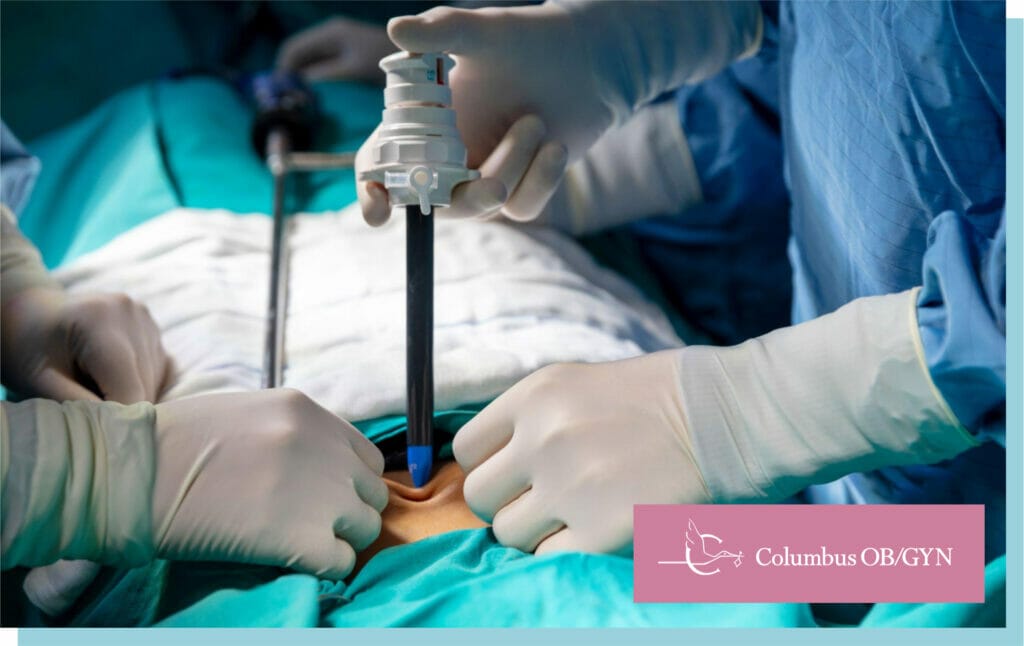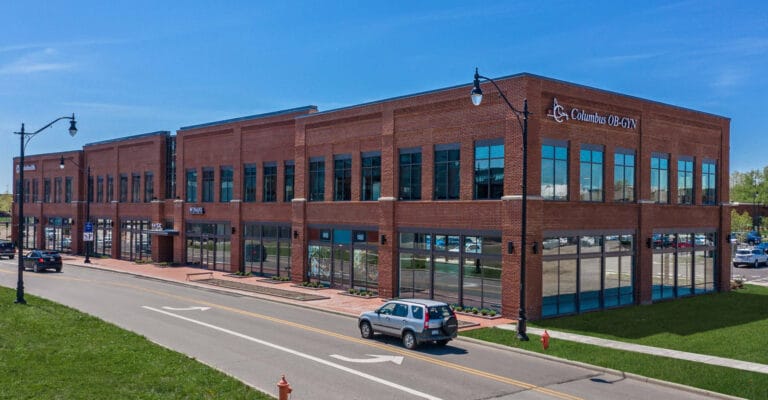A laparoscopy is a medical procedure that your doctor uses to look directly inside your abdomen to diagnose certain problems. This abdominal view can give your doctor a very good look at the outsides of these organs, most importantly your reproductive organs like the uterus, fallopian tubes, and ovaries. Although many medical problems can be diagnosed through procedures that allow your doctor to get an inside view of your reproductive system through the vagina, this helps him or her get a look at what may be causing problems from the outside. This page goes over the basics about laparoscopy procedures- what they are, why they are used, and what to expect during a procedure.
WHAT IS A LAPAROSCOPY?

A laparoscopy is a surgical procedure that allows your doctor to get a direct look at the abdominal organs, most specifically your reproductive system. During a laparoscopy, a small cut is made below your navel and through it a gas is inserted into the abdominal cavity to cause it to swell. A small, thin, telescope-like device with an attached light (laparoscope) will be inserted into the incision to allow your doctor to see the organs. The laparoscope may have a camera that will transmit images to a computer. It also may have surgical instruments attached so your doctor can use it to aid with surgery.
WHY ARE LAPAROSCOPIES PERFORMED?
There are a few different reasons why doctors perform laparoscopies:
- Diagnosis: Laparoscopy is most commonly used in order to diagnose an illness that you may have. Since it allows your doctor to get a direct view of the organs, he or she will be able to see certain things that are making you ill that are not visible to the naked eye or through vaginal inspection. Some of these conditions include:
- Fibroids: Uterine fibroids are benign (noncancerous) growths that can occur inside, on, or outside the uterus.
- Ovarian Cysts: Ovarian cysts are fluid-filled sacs that may develop on a woman’s ovaries. They can be small and asymptomatic, but sometimes they can grow to be immensely large and painful. Usually, they stay small and mild, but the larger ones can cause infertility and menstrual problems.
- Adhesions: This refers to the scar tissue that sometimes forms on organs, usually as a result of surgery, injury, infection, or inflammation. This scar tissue can cause the organs to bind and stick together, which can cause moderate to severe pain.
- Endometriosis: Endometriosis is a condition during which uterine lining (endometrium) tissue begins to grow in places other than the uterine wall. Sometimes it can grow on the outside of the uterus, on the ovaries and tubes, or on the bladder and bowels in some cases. Every month, it will bleed for several days concurrently with the monthly period even though it is not inside the uterus, which can cause severe pain, scarring, and bleeding. Sometimes, endometriosis can not only be diagnosed but also treated through laparoscopy.
- Surgery: Laparoscopy procedures are oftentimes used alongside surgeries. This is because they allow your doctor to get an even better view of the organs. The most common of these surgeries include:
- Sterilization: Sterilization is the term used for the surgery that is a permanent method of birth control, also called a tubal ligation. During this procedure, the fallopian tubes are cut, clipped, or burned in order to block the passage of an egg. A laparoscopy is almost always used to aid in sterilizations.
- Hysterectomy: A hysterectomy is a surgical procedure where the doctor removes the uterus. Laparoscopy can be useful during a vaginal hysterectomy so that the doctor can see inside to remove the uterus and pass it through the vagina. This method of hysterectomy is considered less invasive and has a faster recovery rate.
- Ectopic Pregnancy: Ectopic pregnancy is a condition that occurs when a fertilized egg does not properly return to the uterus and embed itself inside the uterine wall. Instead, it attaches itself inside the fallopian tubes or ovary. This is a very serious medical condition because the growing fetus can cause the tube or ovary to burst, which causes serious abdominal bleeding. Laparoscopies can be used to both diagnose and remove ectopic pregnancies before they burst anything.
- Infertility Causes: If a woman is having trouble getting pregnant, she is considered to have infertility problems. Sometimes these problems are linked to medical conditions, such as tubal blockage. Sometimes, doctors will perform laparoscopies to diagnose and fix what may be causing her to be infertile.
WHAT IS A LAPAROSCOPY PROCEDURE LIKE?

When you arrive in the operating room, you will first receive anesthesia. The type of anesthesia you receive depends on the surgery, invasiveness, and your health. Regional anesthesia blocks and numbs the pain, but you will be awake during the procedure. With general anesthesia, you will be completely asleep during the procedure. Laparoscopic surgery requires the use of general anesthesia for patient comfort and safety.
After anesthesia is administered, a small incision (cut) is made below the navel, through which gas is inserted into the abdomen to cause it to swell. This causes the abdominal wall to be lifted so your doctor can get a better view of the organs. A small, slender device called a laparoscope is inserted through the incision and emits light for a better view as well as transmits a video of its view to a computer, making the procedure much easier to see. Sometimes, other small incisions may be made into the abdomen for the insertion of other small surgical instruments to do the surgery. These instruments can include scissors, forceps, clamps, electrosurgical instruments, or lasers. These all are used to treat the problem and perform the surgery along with the laparoscopy.
After the surgery is performed, all instruments are removed and the gas is released out of the abdomen. The cuts are sealed with dissolvable stitches. Depending on the surgery, you may be able to go home after a few hours.
ARE THERE ANY COMPLICATIONS THAT COULD ARISE FROM A LAPAROSCOPY?
Laparoscopies are one of the safest methods of surgery available, and very few complications do arise. However, as with any surgical procedure, there are always risks. Sometimes you may have bleeding, injury to other organs, infection, or anesthesia-related problems. Sometimes, the blood vessels in the bowel and urinary tract can be damaged, which could call for a second laparoscopy to repair them. However, all these are very rare.
There are some common symptoms that come from having the surgery itself and have no complications. These include:
- Pain around the incisions
- Abdominal cramps
- Nausea
- Tender navel
- Swollen abdomen
- Discharge for several days
- Shoulder pain
WHAT IS THE RECOVERY LIKE?

Since laparoscopy is less invasive than most surgery, it has a much shorter recovery time. Depending on the surgery that accompanied the laparoscopy, it is oftentimes okay to return to normal activities as soon as you feel able. However, you should talk to your doctor about what activities you should abstain from and if it is alright to have sex.
IN CONCLUSION
Laparoscopy procedures are very helpful and important tools that your doctor can use to diagnose certain medical conditions you may have. It has many benefits, such as shorter hospital stays and shorter time to heal. If your doctor believes that you may benefit from a laparoscopy, talk to him or her about any questions or concerns you may have.







